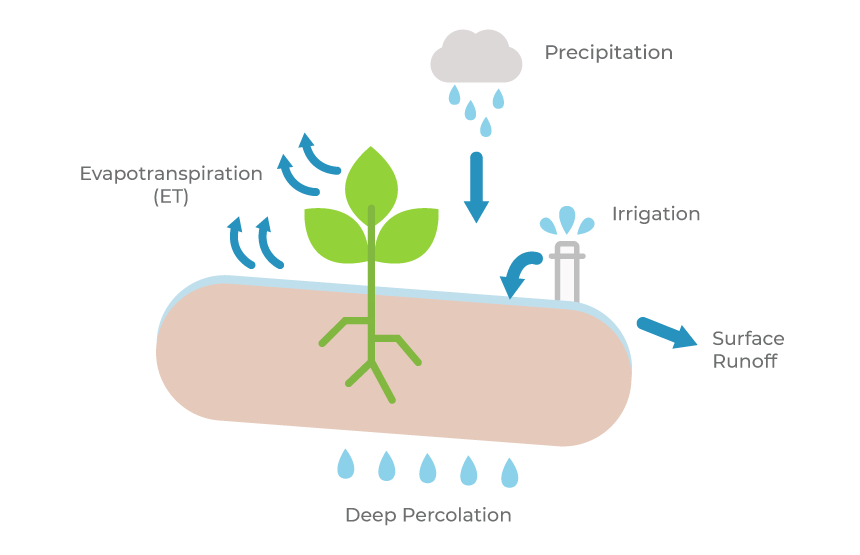Evapotranspiration is a term used to describe the water consumed by plants over a period of time. Evepotranpiration is the water loss occurring from the process of evaporation and transpiration. Evaporation occurs when water changes to vapor on either soil or plant surfaces. Transpiration refers to the water loss through the leaves of plants.
Evapotranspiration is an important process in the water cycle because it is responsible for 15% of the atmosphere’s water vapor.

Evapotranspiration (ET) occours most when the plant is activly growing, transpiring and resporating. Thus leaving the stomates open and is the place of most water loss.
More than 99% of the water used by an irrigated crop or turf is drawn through the roots and transpires through the leaves. Only a small amount (1%) of the water taken up by plants is actually used to produce plant tissue.
The overall amount of evapotranspiration for a crop or landscape over an entire growing season is about the same as seasonal water requirements.
Keeping track of evapotranspiration in your local area can help you more efficiently irrigate your turf.
How is evapotranspiration is estimated?
The two most important factors needed to estimate evapotranspiration are 1. The local weather conditions. 2. The cropping system for which estimates are needed (type of crop, planting date, crop development)
Local weather conditions are important because evapotranspiration is driven by weather factors that can determine the drying power of the air. You can acuratly predict evapotranspiration in a given area from these four local weather variables;
Soil radiation
Temperature
Humidity
Wind
The data from these measurements are then plugged into equations that accurately predict the daily rate of evapotranspiration for those conditions. These values are called reference evapotranspiration and refer to the evapotranspiration of the reference crop.
If you require any further information please contact us via our website internationalgreenkeepers.com
Facts have been sourced from Colorado State University studies. https://coagmet.colostate.edu/extended_etr_about.php
